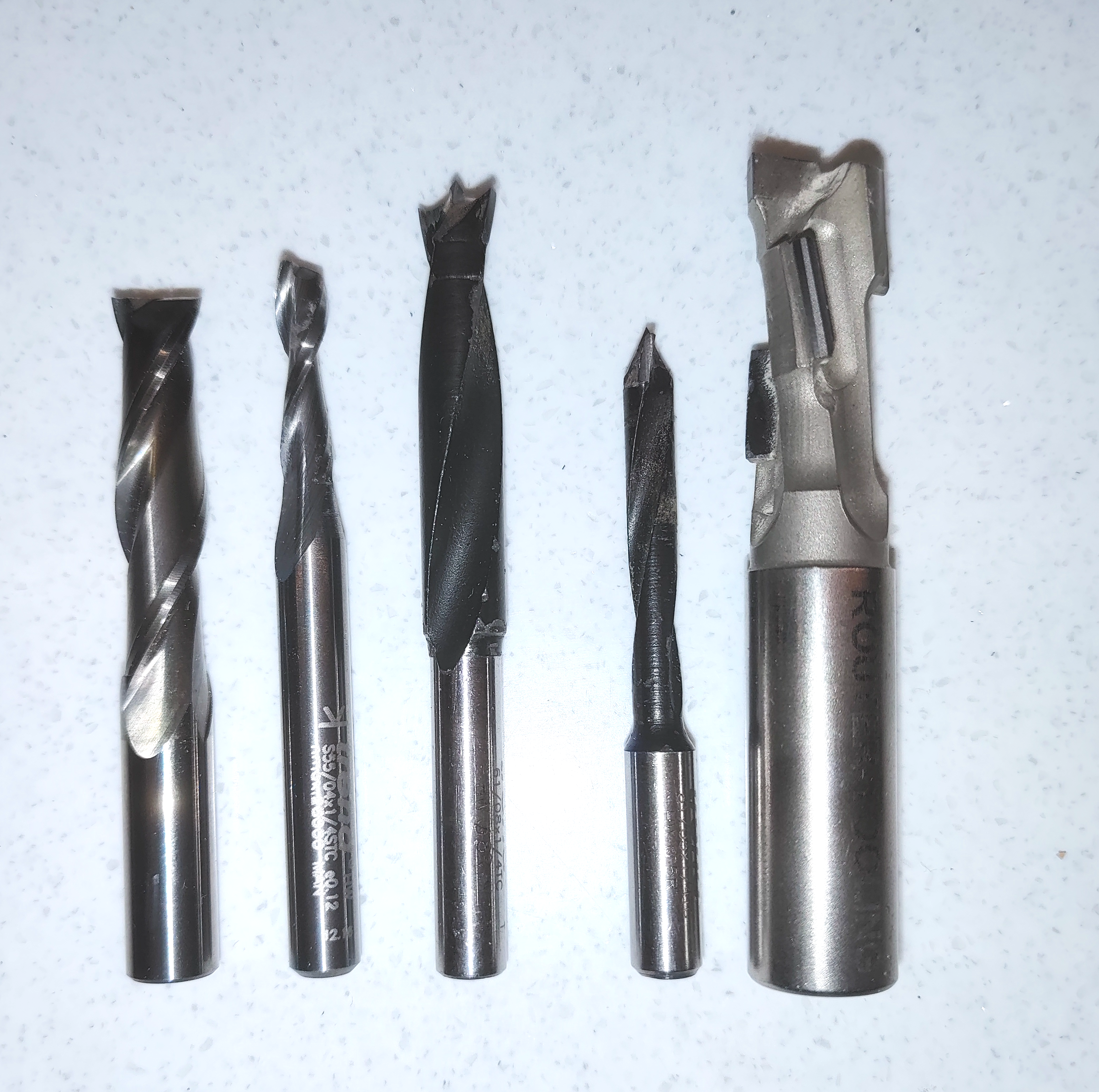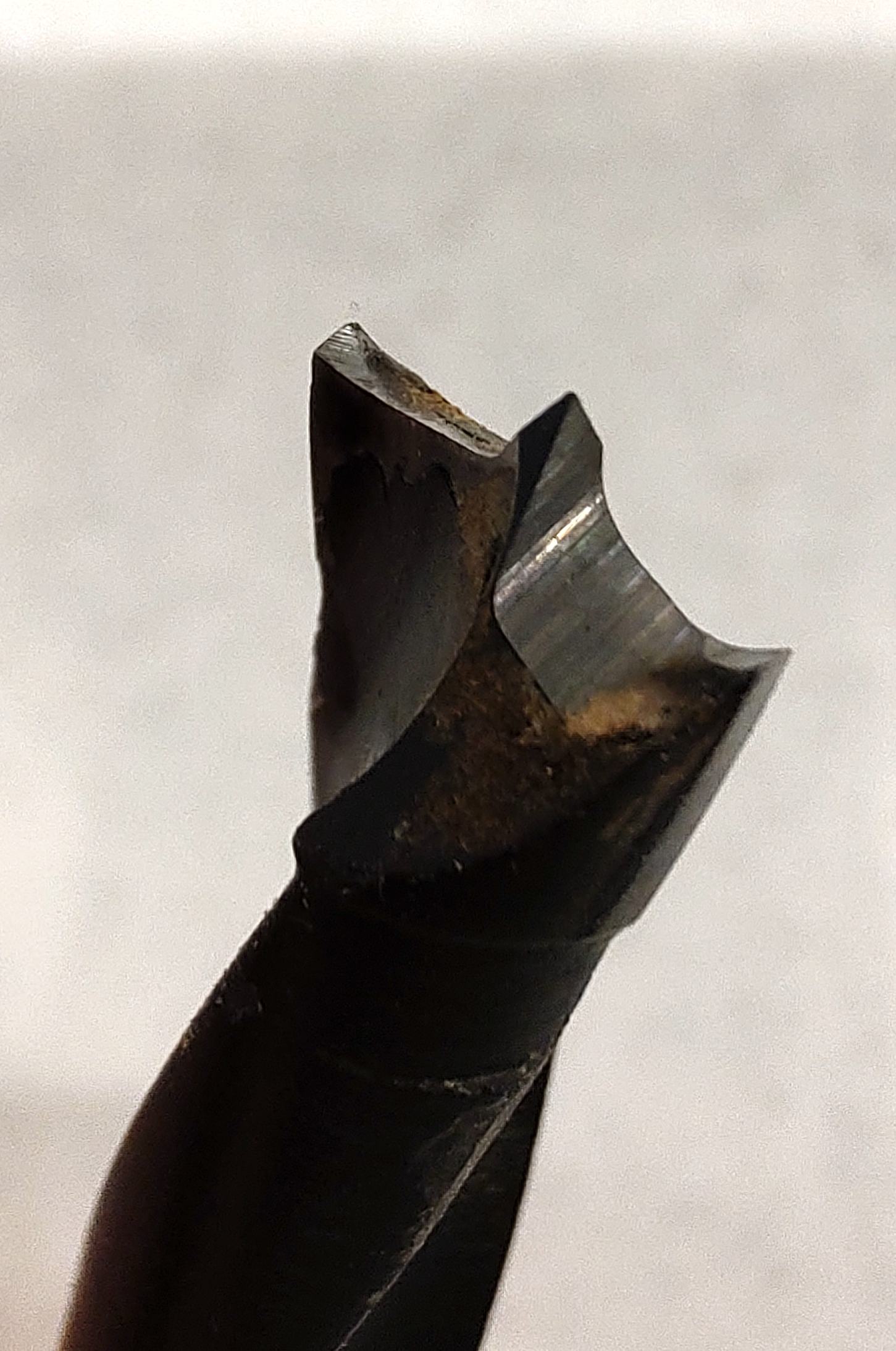CNC drilling wooden panels
What is CNC drilling?
Workshops that process MFC, MDF and birch ply (cut and edge services) use CNC panel processing centres for CNC drilling. The machines these workshops have usually comprise a beam saw to cut the panels, an edgebander to apply matching edging in ABS plastic, wood veneer etc and the CNC machine is used to drill hinge holes, shelf holes and dowels. Why not use the CNC to cut panels? Too slow.
So whilst a CNC machine is often described as "only limited by your imagination", in practice for cut and edge services it is often used just for drilling. And this is enough for the machine to earn its keep. A CNC machine can drill five hinges for a tall door in two minutes and compared to marking out by hand this offers huge savings. Further to this, some companies use the CNC just to drill hinge holes as it is fast, the programming very simple and can be carried out directly at the machine rather than someone in the office creating the CNC program. In summary the workflow for CNC drilling is:
- cut the panel to size on the beam saw
- edgeband the panel on the edgebander
- load the panel into the CNC
- use macros on the integrated PC on the CNC to specify the number of hinges to be drilled
- the CNC has 35mm and 3mm diameter tools in its toolchanger and drills the necessary holes for the hinge
Compare this to the more usual flatbed CNC workflow
- load a full size panel e.g. 8 x 4 MDF (2.4m by 1.2m)
- Create a plan of what to cut in a drawing or CAD package such as Solidworks, Autocad, Adobe Illustrator etc
- Export the plan as a DXF file (Autocad data exchange format)
- Import the DXF file into a CAM (Computer Aided Manufacturing) application. This produces toolpath GCode (.nc file) containing the x,y,z coordinates for every CNC movement
- Load the GCode program into the CNC controller on the CNC machine
- Run the GCode which will cut out the panels and drill hinge, dowel, shelf holes etc and indeed any other complicated toolpaths
The latter workflow is more versatile but requires more steps, a mixture of office base work and workshop. The former workflow can happen in the workshop.
What are the differences in tooling for CNC drilling compared to Flatbed CNC?
With a flatbed CNC most of the operations can be carried out with a small number of cutters, for example a 5mm and an 8mm diameter spiral cutter. With CNC drilling a toolchanger loaded with all the diameters expected to be drilled is used. Common tools to have in the toolchanger are drills of these diameters : 3mm (for pilot holes), 5mm (for shelf studs), 8mm (for dowels), 15mm (for cam dowels), 20mm (for Rafix KD fixings), 35mm (for Blum hinges).
Taking as an example machining a Blum hinge hole, the CNC drilling machine would use the 35mm diameter drill whereas the flatbed CNC could use the 8mm diameter spiral cutter. The CNC drilling machine would be faster and arguably give a better finish.
CNC machines are infinitely versatile but for making cabinetry a class of CNC known as a "vertical processing centre" or a "machining centre" suits a cabinetry workshop better. The features of these machines include:
- loads a single panel at a time. Fixturing panels in a CNC takes time whereas with a machining centre individual panels are fed in (after been cut to size and edgebanded) and processed.
- toolchanger loaded with most frequently used cabinetry tools including 3, 5, 8 and 35mm drill bits
- capable of end-drilling e.g. drill 8mm diameter dowel holes in end of a panel. A seemlingly simple operation but something that a flat-bed CNC struggles with
The two machining file formats we support are:
- TCN files - Felder machine preferred format
- WoodWOP / MPR files - Homag machine preferred format


File formats for CNC wood panel processing machines explained
CNC machines are infinitely versatile but the setup time can be long and this can kill the economics of one-off jobs.
We aim to provide you with files that you can run immediately while standing in front of the machine.
For this you need a file in the format the machine expects. For Homag machines this will be a .MPR file (WoodWOP) and for Felder this will be a .TCN file (TpaCAD).
The crucial feature of MPR and TCN files is that they contain the complete instructions required to command the machine. For example drill a 35mm diameter hole at 100mm from one edge and 22.5mmm away from the adjacent edge. The file contains:- the feature to machine e.g. a hole
- the tool to use e.g. a 35mm diameter drill bit
- feed speeds e.g. 'Slow-Fast-Slow'
- the toolpath e.g. should the tool be centred or be offset by the diameter of the tool
A common file format such as Autocad DXF contains only the first element in this list - the feature to machine. To work out the rest some kind of software package such as Homag WoodWOP or Biesseworks is required to postprocess the DXF and generate the toolpath, tool numbers etc.
With our service and the files it generates you don't need anything else. Our files contain all the information the machine needs. You can transfer the file to the machine using a USB stick and run it immediately.